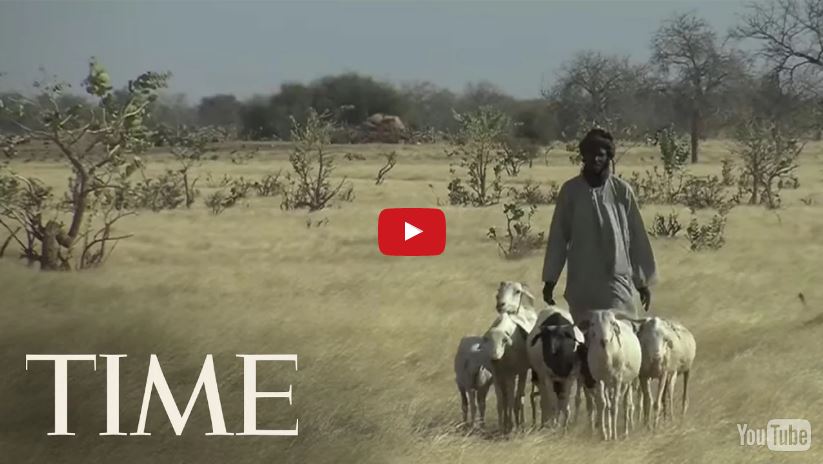Do You Know What is Africa’s “Great Green Wall”?
To understand why there is a “Great Green Wall” project going on, we should mention that on September 25th 2015, the countries of The United Nations adopted a new sustainable development agenda and global agreement on climate change, with set of goals to end poverty, protect the planet, and ensure prosperity for all. Each goal has specific targets to be achieved over the next 15 years; the Goal #15 is “Life on Land”.
First, what is desertification?
Desertification is the loss of arable land, in this case to the engulfing Sahara. About 40 percent of Africa is threatened by it. Although among the different sources reviewed for this article we can find that a few authors argue that the desert is not advancing, most authors predict that as much as two thirds of arable land could be lost if the current desertification trend continues.
Let’s mention The Sahel, this is a semi-arid transitional zone between the Sahara desert and the savannah, this is the focus of efforts to build a “Great Green Wall” to hold back the desert and provide jobs and sustainable development for struggling African nations.
According to UN, 100 million Africans are threatened by growing desertification as the climate changes and the worst drought in 30 years affects parts of the continent. That is because two-thirds of Africa’s arable land could be lost by 2025 if that trend continues.
“Once completed it will be the largest man-made structure on Earth and a new Wonder of the World” –greatgreenwall.org
What is Africa’s “Great Green Wall”?
The Great Green Wall is an African project which goal is to plant a wall of trees on a strip stretching from Senegal in West Africa, to Djibouti in East Africa, that would be around 7.000 Km (4,400 Miles) line of plants and trees across the African continent, Its objectives are to provide food, jobs and a future for millions of people along 11 countries on the frontline of climate change.
According to the U.N. Convention to Combat Desertification (UNCCD) “The Great Green Wall is about more than just planting and counting trees, it is about building resilience in communities and developing sustainable projects to give young people reasons to stay”.
Facts
- Thirteen million hectares of forests are being lost every year while the persistent degradation of dry lands has led to the desertification of 3.6 billion hectares.
- 6 billion people depend directly on agriculture, but 52 per cent of the land used for agriculture is moderately or severely affected by soil degradation
An “Integrated Landscape Approach”
The project was originally presented to the African Union in 2005 by Olusegun Obasanjo, the Nigerian president back then, the Great Green Wall initiative received $4 billion of funding from signatories to the U.N. climate deal agreed in Paris in 2015, and has received pledges from France and the World Bank.
Around 15 percent of the wall of trees has been planted, mainly in Senegal where acacia trees are harvested for Gum Arabic, a substance used widely to manufacture products including pharmaceutical and soft drinks. Villages in Burkina Faso, Mali and Niger have also made progress.
“There is a mobilization of local people, who are at the heart of restoration work and choosing what they want to plant,” said Nora Berrahmouni of the U.N. Food and Agriculture Organization to Thompson Reuters Foundation.
Africa’s Great Green Wall could halt more than desertification, many experts agree
The BBC reports that the improvements in land quality and economic opportunity in Mali may help curb terrorism in the country, where famine and poverty have exacerbated a spike in political and religious extremism.
There is also a similar initiative in China where former South Korean ambassador to China Byong Hyon Kwon, is now an activist in the global fight against deserts on the move.
This article is based on a story from Reuters. For more info please visit:
www.reuters.com/article/us-africa-climatechange-idUSKCN0XW17Z
www.economist.com/blogs/economist-explains/2016/09/economist-explains
www.un.org/sustainabledevelopment/




Comment (1)
Don’t you think that if HAARP gets stopped in it’s tracks our climate will revert back to normal? If companies that chop down trees were made to plant 2 in every tree’s place, if we could plant hemp for paper, it would help create jobs and lessen poverty….The Earth can heal itself – we need to heal ourselves of greed for money and wealth. Money cannot be eaten and the global trend is to always have more of it…..In my opinion global warming is just another man made, money-grabbing scheme……..
Comments are closed.